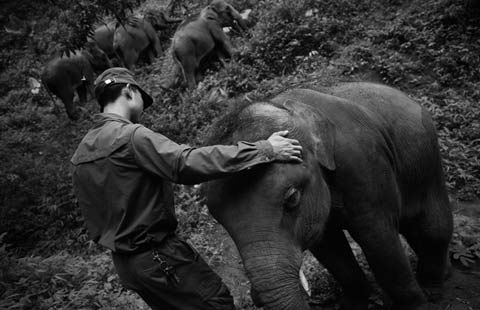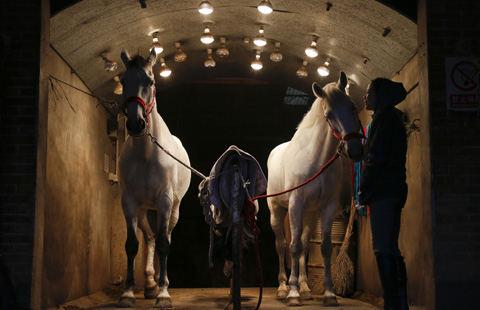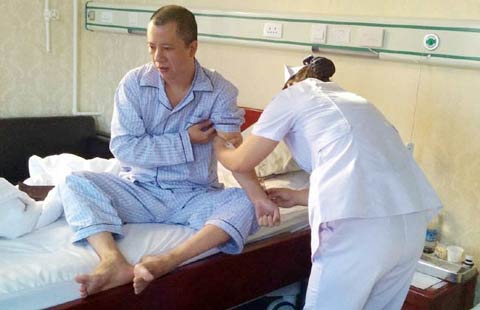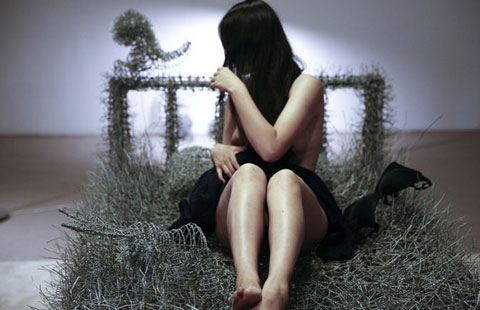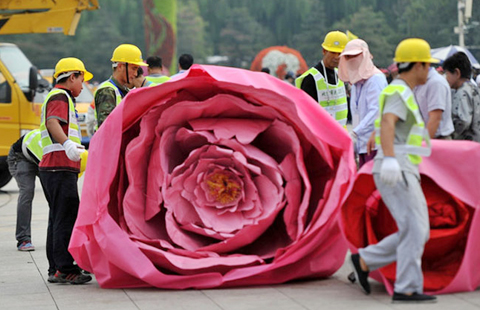|
Dragon Pavilion Park
The park is a national 4-A class scenic spot, built on the ruins of the Six Dynasties’ Palace (later Liang Dynasty, Jin Dynasty, Han Dynasty, Zhou Dynasty in the five dynasties, and Northern Song Dynasty, Jin Dynasty). The park’s main building is Longting Hall, which is resplendent and imposing. There are also other classical Palaces of Longevity from the Qing Dynasty, like the Meridian Gate, Jade Belt Bridge, Song Cry (for local officials of Kaifeng to bow down to the emperor ), Propylaeum, the Screen wall and waiting room for officials in the park. All these are parts of Longevity Palace (Qing Dynasty), which fully show the majesty of the northern Royal Garden in China.
|
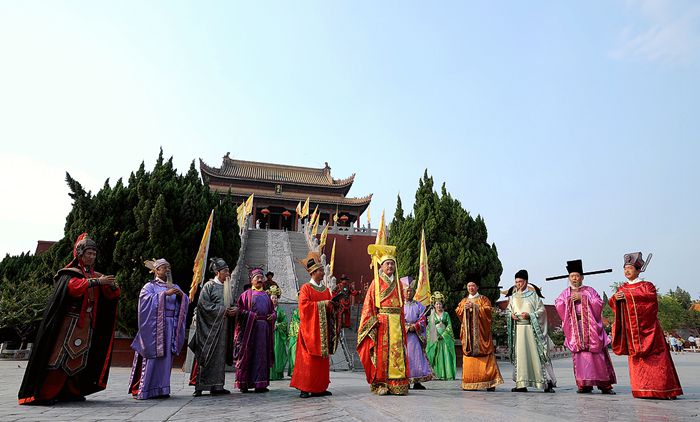
A history play about the Song Dynasty (960-1127) is performed at Dragon Pavilion Park. |
|
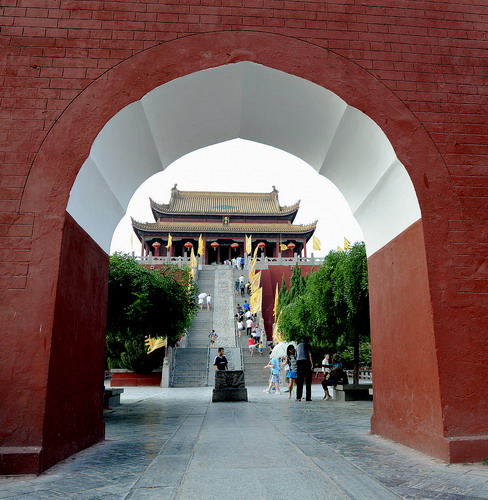
The park is 86.6 hectares, of which 47.3 hectares are covered by water, which surrounds the park on three sides. The beautiful scenery not only shows the vigorous spirit of the Chinese Northern Palace, but also the charm of the Chinese Southern Garden. |
|
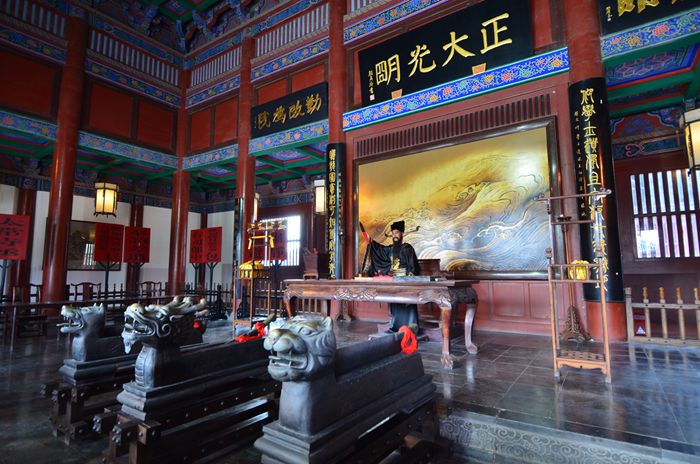
The picture shows a tourist spot at the Kaifeng Palace, which re-enacts how Baogong (an upright official known for his stressing of the dignity of law) settled legal cases in those days. Kaifeng Palace, located on the north shore of Baogong East Lake, is known as the first government office of Ancient China, where capital officials worked during the Northern Song Dynasty.
|
|
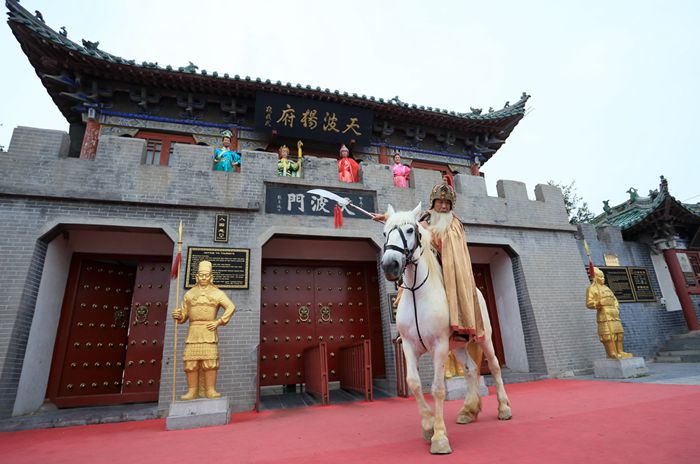
This picture shows one of Kaifeng city’s historical sites: TianboYang Fu. It is the mansion of Yangye, a famous national hero who resisted Liao’s aggression in the Northern Song Dynasty. It is seated in the northwest of Dong Jing(the capital of the Northern Song Dynasty, today’s Kaifeng city), near the Jinshui River. Yangye was a military official who, together with his family, were famous for their loyalty. Emperor Zhao Guangyi, also known as Song Taizong, showed his appreciation for Yangye’s loyalty by awarding him the money to build Tianbo Yang Fu. |
|
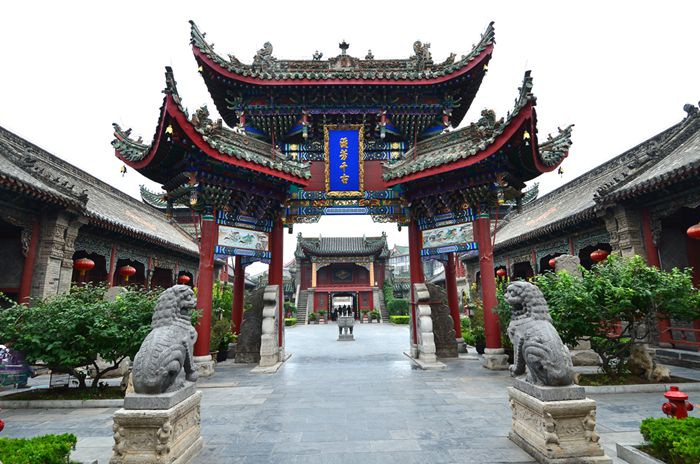
The Guild Hall was a place where the association of fellow provincials or townsmen gathered together. The Guild Hall of Shanxi-Shaanxi-Gansu Province is located in Kaifeng city, which was built during the reign of Emperor Qianlong. At first, it was an association organized by merchant princes from Shanxi and Shaanxi province, so that they could expand and protect their business and interests. Later, the merchants from Gansu province also took part. Hence its final name “Guild hall of Shanxi-Shaanxi-Gansu Province”. |
|
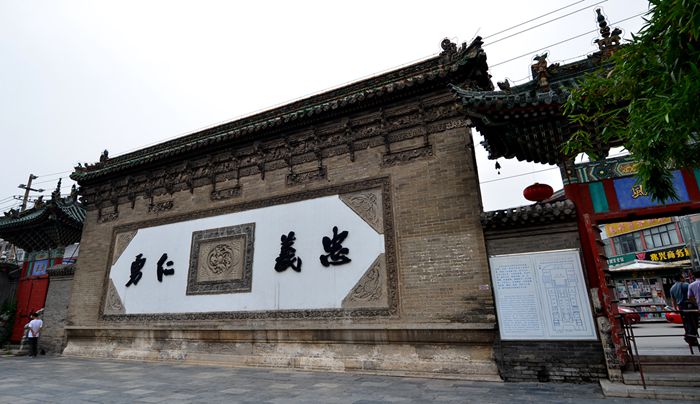
The calligraphy on the wall of the Guild Hall of Shanxi-Shaanxi-Gansu province. |
|

Yuwang Tai, also known as Guhou Tai, is a famous tourist attraction in Kaifeng, which is located about 1.5 km southeast of Kaifeng city. It has been transformed into Yuwangtai Park. |
|
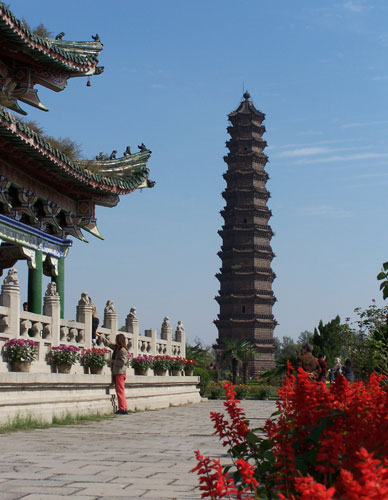
Kaifeng Iron Tower, located in Tower Park, sits in the northeast corner of Kaifeng city. It was built in AD1049 (the Northern Song Dynasty). In 1955, the tower area was rebuilt as Tower Park, which covers an area of 51.24 hectares. It is one of the top 100 gardens in China. |
|
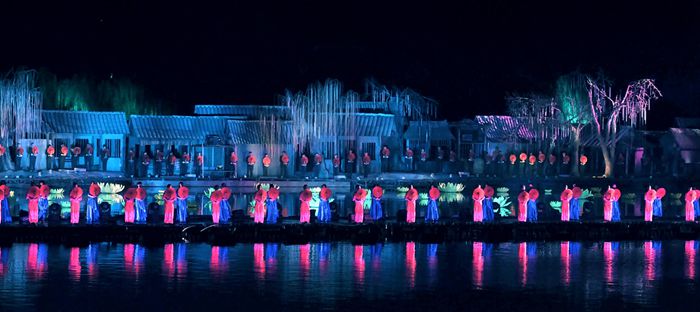
Song Dynasty•Dong Jing Dreaming About Diversity is a large outdoor performance. Another masterpiece of Chinese reality performance, it is 70 minutes long and involves more than 700 actors. |
|
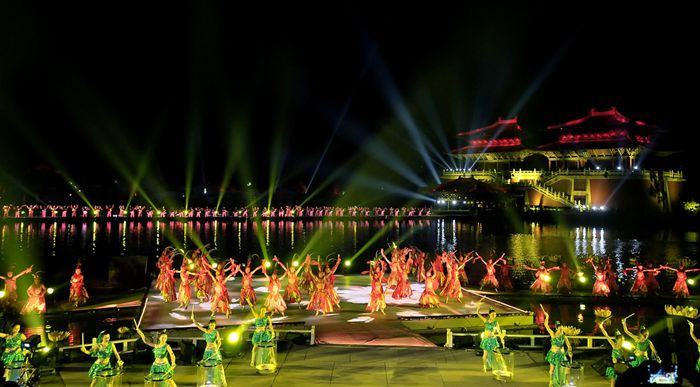
Actors perform in Millennium City Park. |
Local delicacies
|
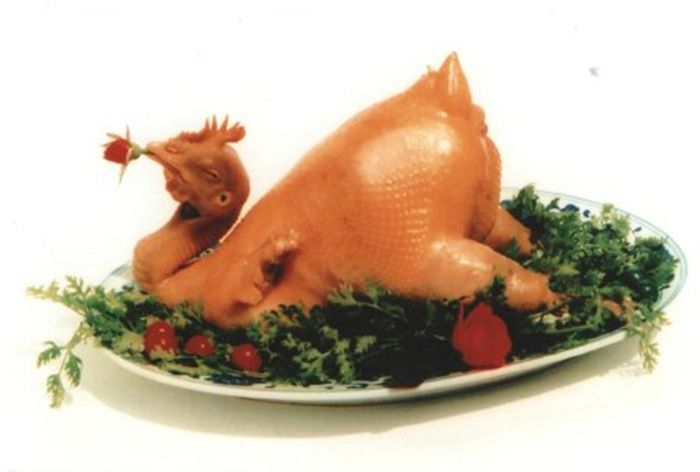
Bucket-like Chicken gains its name because of its bucket-shaped appearance. Stuff a two-year-old hen’s belly with lotus leaves to make it plump and boil it in seasoned water and you get this golden yellow dish, tasty and not greasy. |
|
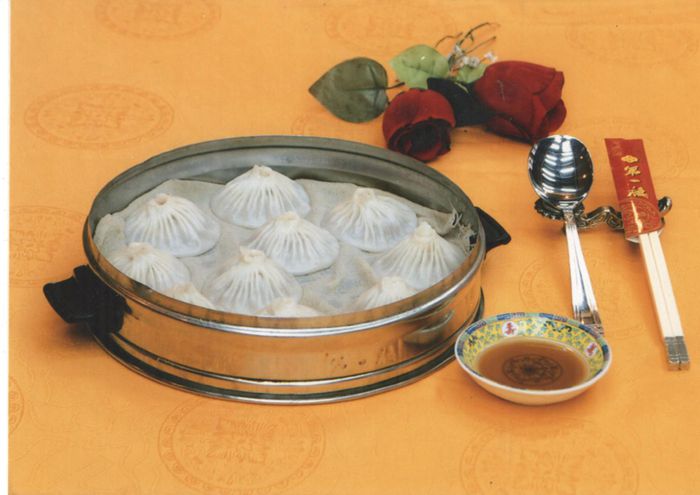
Steamed Bun stuffed with Juicy Pork has a thin wrapper and juicy filling. The filling is made of ham and pork mixed with sesame oil, soy bean sauce and cooking wine. The dough for the wrapper is made by adding water and flour three times. Another crucial step is to put the buns into a streamer containing lotus leaves in summer and pine needles in winter. |
|
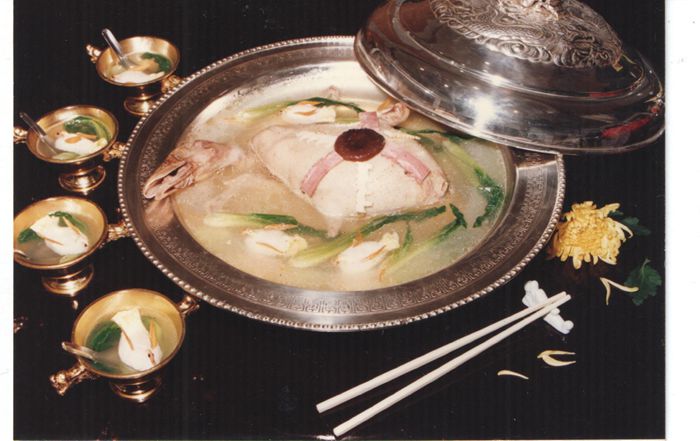
Four Treasures in One means four birds - duck, chicken, pigeon and quail - covering each successively, forming a whole. Remove the bones of the four birds and keep them. Fill the quail with sea cucumber, fish maw, scallops, ham, mushrooms, bamboo shoots, green peas and chufa and boil in clear soup. Put the quail into the pigeon, the pigeon into the chicken and the chicken into the duck to boil three times. Finally, stew the whole thing to get a thoroughly cooked dish. |
|
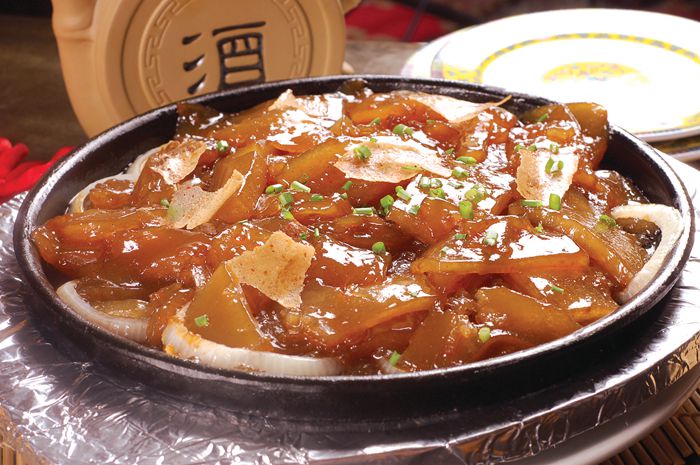
Fried Jelly is a local delicacy in Kaifeng, Henan. Choose jelly made of sweet potato starch cut into cubes. Bake them in a pan and add scallion, ginger and minced garlic to fry. Spray soybean paste onto the cubes and braise them. Finally, add pimientos and garlic stems and stir-fry with a spatula. |
|

